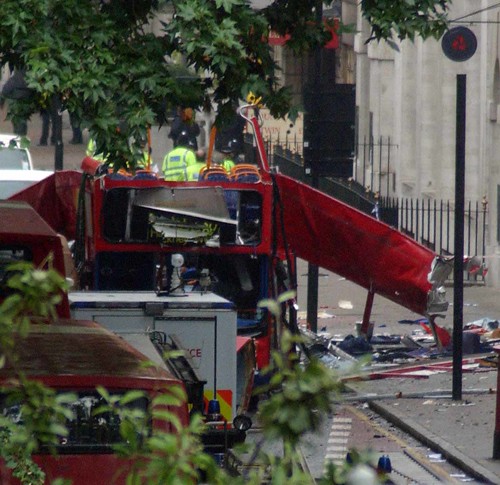
Photo by Simonrobling
Bus controllers were only told bombs had gone off on Tube trains after a fourth device detonated on a bus, the 7/7 inquest has heard.
There was a gap of nearly an hour between the first wave of three attacks on the London Underground at about 8.50am on July 7, 2005 and the bombing of a number 30 bus in Tavistock Square at 9.47am.
However, it was not until 9.53am that the senior official with the power to halt the capital's bus services was told bombs had been used on the Tube.
The families of some of the 13 passengers killed on the number 30 have questioned why London's entire public transport network was not shut down after the Underground attacks.
But Alan Dell, London's bus network liaison manager, said he would not have stopped the buses even if he had known about the earlier bombings. He told the inquest it was the role of London's buses to help move the 200,000 people evacuated from the Tube network that day.
"All the indications, with hindsight, were that the attacks were taking place on the Underground," he said.
Mr Dell did suspend all buses from running in central London after suicide bomber Hasib Hussain, 18, blew himself up in Tavistock Square.
But he said that takes up to 90 minutes, meaning that even if the order had been issued earlier it may not have stopped the attack.
The Metropolitan Police's control room received a report at 9.10am that a bomb had gone off on a train at Aldgate station but this was not passed on to Mr Dell, the inquest heard. At 9.53am when bus controllers got a call from London Ambulance Service to say a major incident had been declared and bombs had gone off across the capital.
Mr Dell said he thought this was the first time he learned a major incident had been declared. He added: "It's certainly the first time the word 'bomb' was used."
Copyright (c) Press Association Ltd. 2010, All Rights Reserved.



































